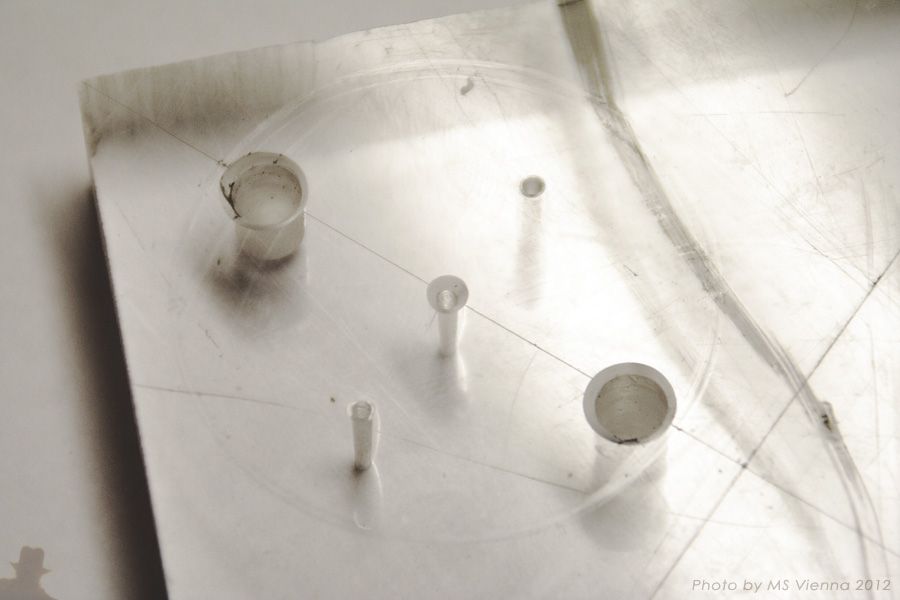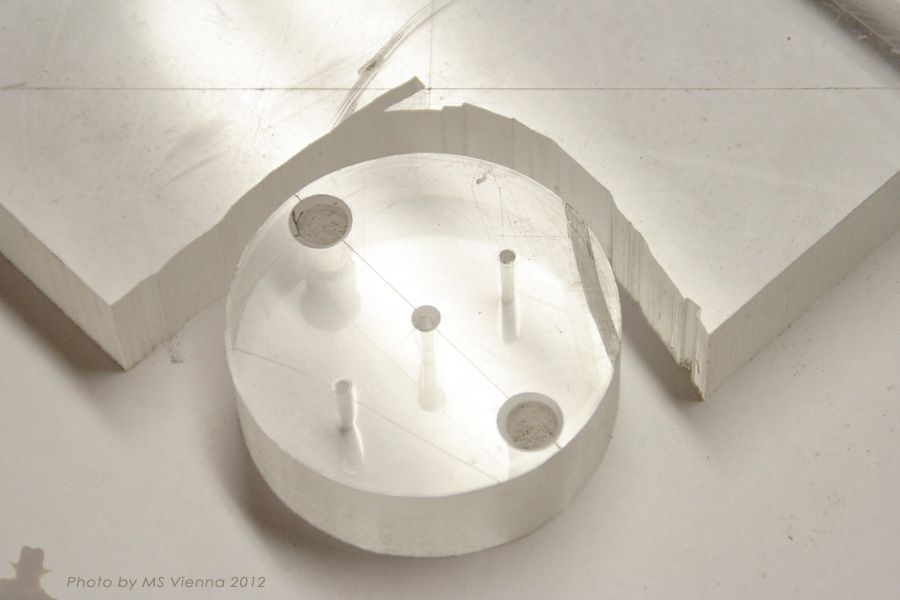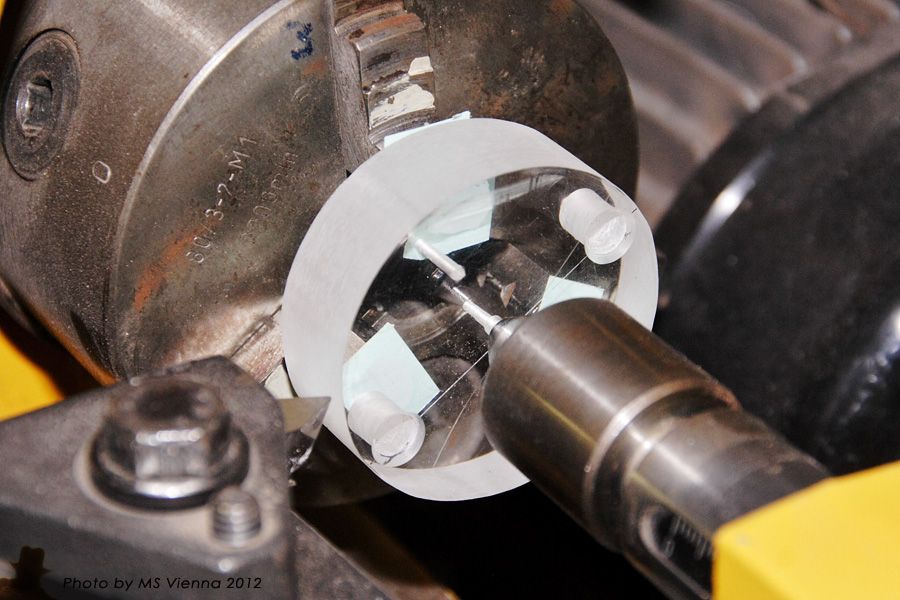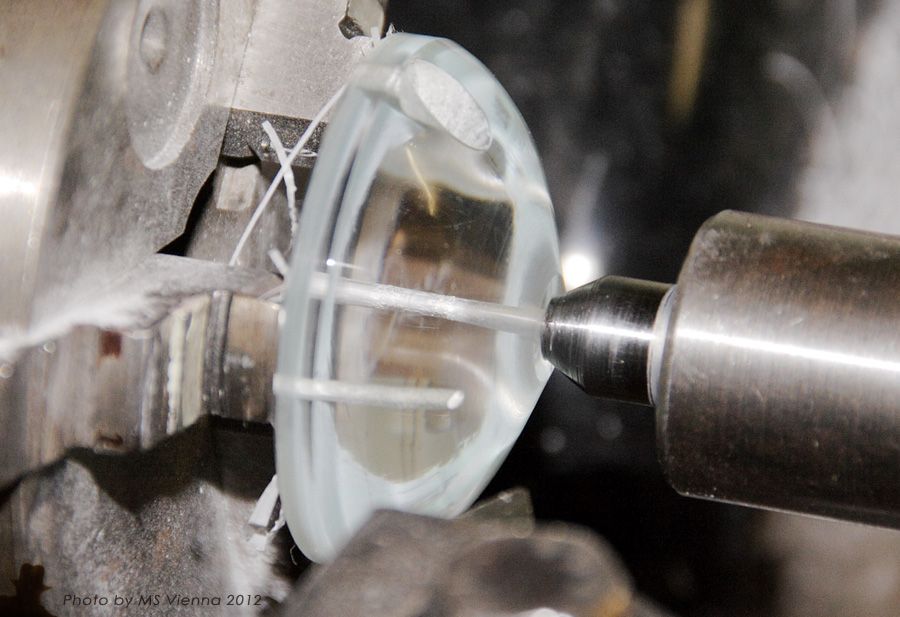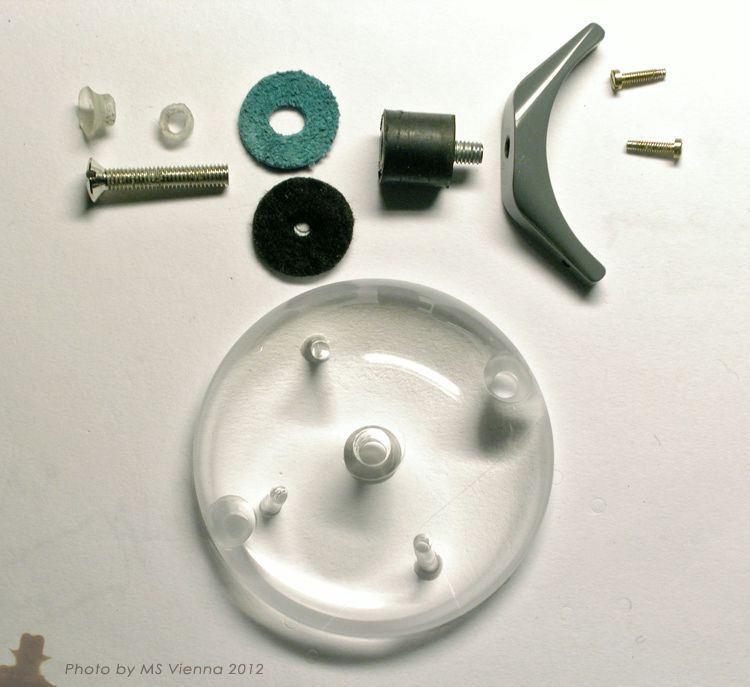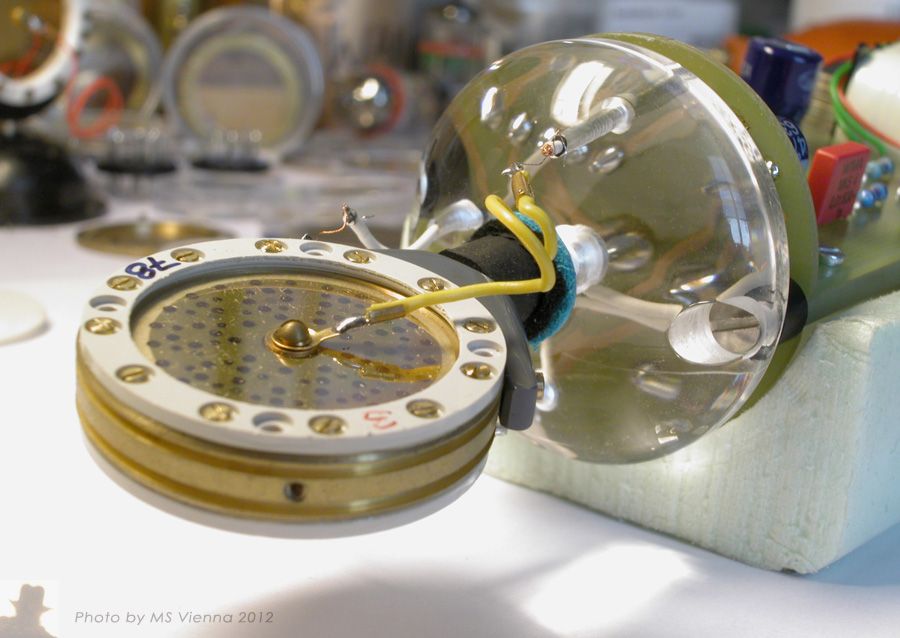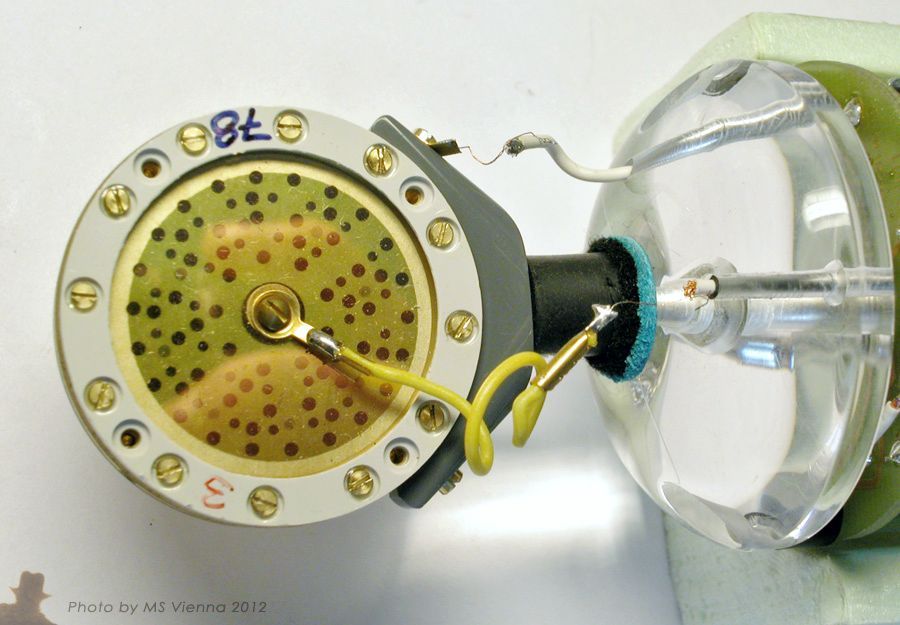MS Vienna
Well-known member
Seems that there are some different versions of the VM1 around...
It´s good to know that the circuit is basically a G7 as it seems to be a good one. And given that Dirk Brauner was heavily into tube circuits even before he started making mics I think the amp design is fine enough as it is.
To avoid confusion I changed the Topic´s title to "My" Brauner VM1 modification. So here some infos about this specific mic.
Serial number is 1073 (which doesn´t like that top end zing ;-)
Tube is Philips 5840 (picture stock condition)
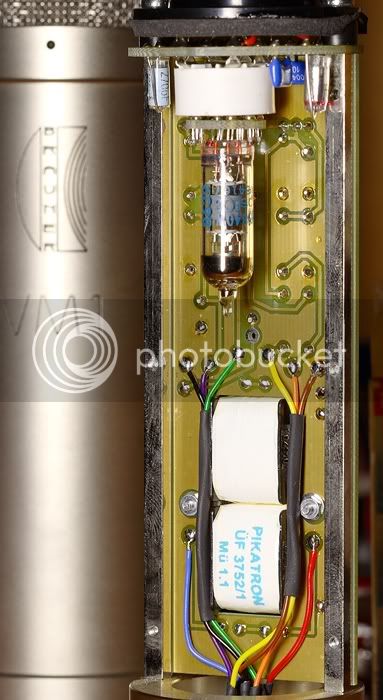
Capsule is K67/K47-hybrid concept, manufactured by MBHO.
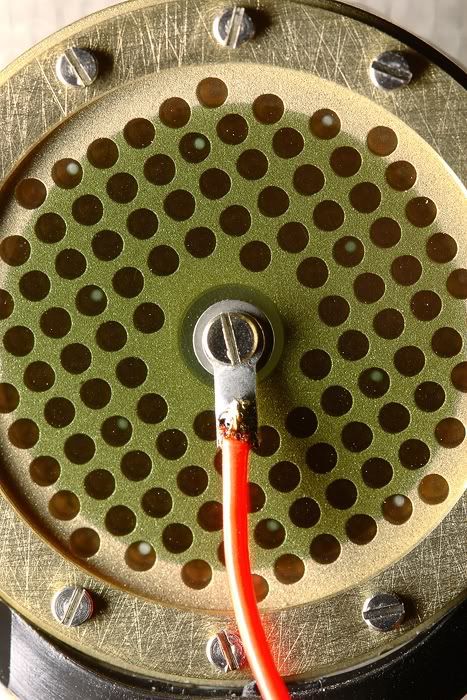
Workmanship is excellent, acoustical concept questionable IMHO. Essentially it combines the shortcomings of the K67 (top end exaggeration) and the K47 (highly inconsistent frequency response from omni to figure eight being very midrange dominated in the latter pattern).
Furthermore the capsule base is really less than ideal. It´s an injection molded ABS part, a small dome surrounded by a "moat" with flat ground (the grille entry starts a good deal higher than the ground of the capsule base). None of the great classic mics have that "feature" as from an acoustical point of view it makes no sense. Plus the capsule´s position within the grille is very low.
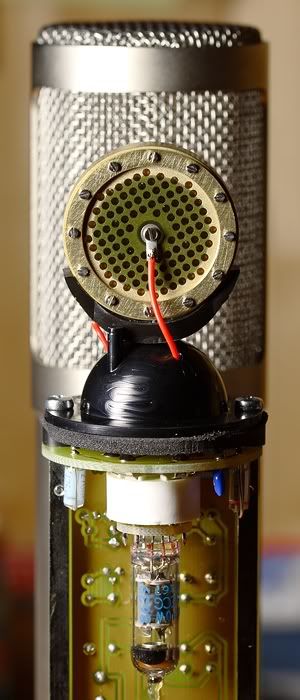
Add the flat top grille and you get me seriously scratching my head...what an acoustical mess!
So my next step was to modify the capsule base with various custom made wedged rings of Plexiglas in different dimensions and to elevate the whole thing in the grille by using spacers. No surprise - sound improved. After thorough experimentation I decided to throw out the complete base assembly and make a new one from scratch.
That was a pencil sketch to lay out dimensions and angles/shape of the new Plexiglas base.

(don´t be confused by the illustration of capsule/holder)
More to follow - have to go back to work now.
It´s good to know that the circuit is basically a G7 as it seems to be a good one. And given that Dirk Brauner was heavily into tube circuits even before he started making mics I think the amp design is fine enough as it is.
To avoid confusion I changed the Topic´s title to "My" Brauner VM1 modification. So here some infos about this specific mic.
Serial number is 1073 (which doesn´t like that top end zing ;-)
Tube is Philips 5840 (picture stock condition)

Capsule is K67/K47-hybrid concept, manufactured by MBHO.

Workmanship is excellent, acoustical concept questionable IMHO. Essentially it combines the shortcomings of the K67 (top end exaggeration) and the K47 (highly inconsistent frequency response from omni to figure eight being very midrange dominated in the latter pattern).
Furthermore the capsule base is really less than ideal. It´s an injection molded ABS part, a small dome surrounded by a "moat" with flat ground (the grille entry starts a good deal higher than the ground of the capsule base). None of the great classic mics have that "feature" as from an acoustical point of view it makes no sense. Plus the capsule´s position within the grille is very low.

Add the flat top grille and you get me seriously scratching my head...what an acoustical mess!
So my next step was to modify the capsule base with various custom made wedged rings of Plexiglas in different dimensions and to elevate the whole thing in the grille by using spacers. No surprise - sound improved. After thorough experimentation I decided to throw out the complete base assembly and make a new one from scratch.
That was a pencil sketch to lay out dimensions and angles/shape of the new Plexiglas base.

(don´t be confused by the illustration of capsule/holder)
More to follow - have to go back to work now.



